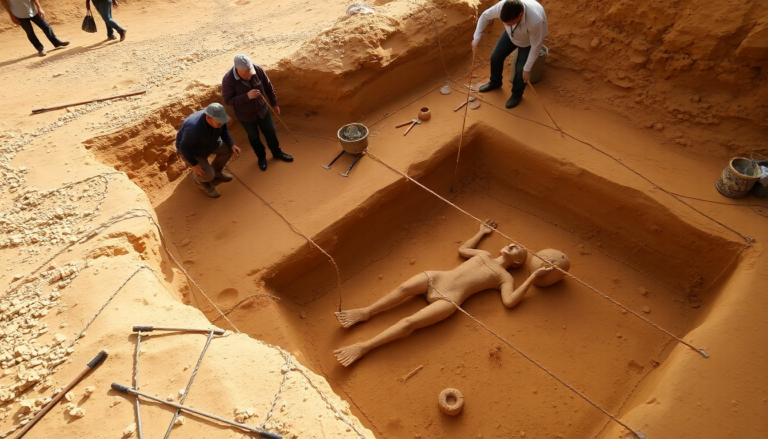Argomenti trattati
Imagine wandering the ancient streets of Áspero, a site that hides secrets beneath its sun-baked earth. Recently, this Peruvian archaeological treasure trove unveiled a striking discovery: the remarkably preserved burial of a young woman, aged between 20 and 35, nestled within the ceremonial complex known as Huaca de los Ídolos. Led by the passionate Dr. Ruth Shady, the excavation team has not only uncovered bones but also a stunning glimpse into the life and status of a woman who likely belonged to the elite of her time.
Unearthing the past
What makes this discovery particularly astonishing is the preservation of the body, complete with skin, hair, and nails—an exceptional feat compared to the typical skeletal remains that archaeologists often encounter. This preservation invites us to reflect: how did ancient civilizations manage to maintain such integrity in their burial practices? The body was wrapped in cotton textiles and mats of reed, adorned with a beautifully embroidered panel featuring colorful macaw feathers, showcasing the exquisite craftsmanship of Andean artisans. The head, still boasting its hair, was crowned with a headdress made from woven fibers and spirally wrapped threads—one of the earliest examples of Andean feather art.
A powerful figure
This was no ordinary woman; the burial offerings tell a story of power and prestige. Archaeologists discovered a wealth of items surrounding her remains: four reed baskets, an Amazonian conch shell, a beaded toucan beak, weaving tools, a fishing net, and even a bounty of sweet potatoes. Each artifact speaks volumes about the social hierarchy of the Caral civilization and the significance of this individual. Could she have been a priestess, a leader, or perhaps a revered artisan? The variety and richness of the offerings suggest that her status held considerable weight in her community.
Artifacts that tell a story
On top of her burial site lay three bottle-shaped containers and another basket placed on a totora reed mat. These objects are not merely relics; they represent a narrative of the civilization that once thrived here. They illuminate the intricate social structures and the ceremonial practices that were part of daily life. As many know, the Caral civilization is often considered one of the oldest in the Americas, and each finding continues to reinforce the notion of a complex society with deep-rooted traditions.
Interestingly, this isn’t the first time Áspero has revealed such significant historical figures. In 2016, the Dama de los Cuatro Tupus was unearthed, followed by the Varón de Élite in 2019. These finds, dating back to the same period, collectively paint a picture of a structured society where elite individuals were laid to rest with dignity and respect, echoing the social stratification similar to that of La Galgada.
The importance of Áspero
Áspero, positioned near the ancient port city chosen by the Caral civilization, spans an impressive 18.8 hectares, merely 700 meters from the ocean. This site has yielded up to 22 architectural complexes, hinting at a vibrant community of skilled fishermen and traders. I remember my first visit there—the salty breeze, the sound of waves crashing, and the palpable sense of history in the air. It’s no wonder that after years of neglect, the site underwent a transformation in 2005, emerging as a critical focal point for archaeological study and preservation.
Connecting cultures
The residents of Áspero were not just passive observers of history; they were active participants in a vast network of intercultural exchange. Their peaceful and beneficial trade connections extended to both coastal and far-flung Andean and Amazonian regions. This interconnectedness is a testament to the advanced nature of their society—a society that thrived on collaboration and mutual benefit.
As we continue to unravel the threads of history through such discoveries, one can’t help but wonder what else lies buried beneath the surface, waiting to reshape our understanding of the past. Will future excavations yield even more surprises? Only time will tell, but what we know for certain is that every artifact, every burial, and every story contributes to the rich tapestry of human history.

